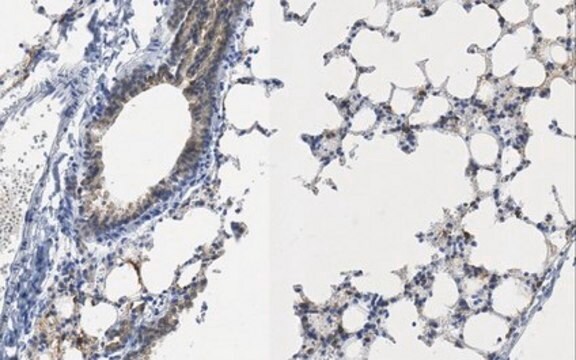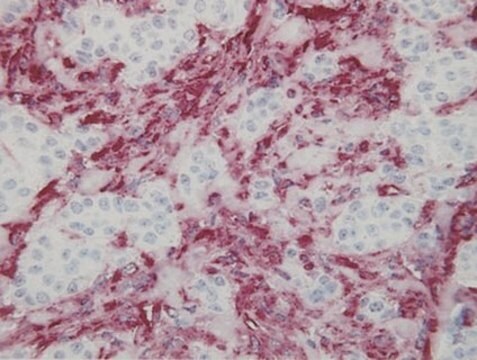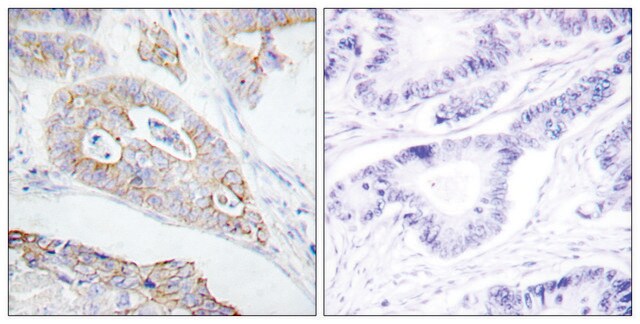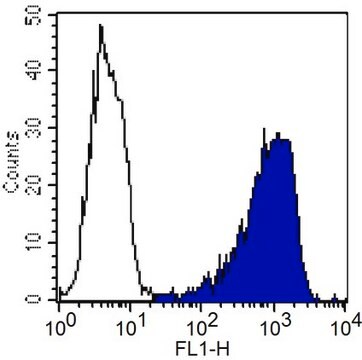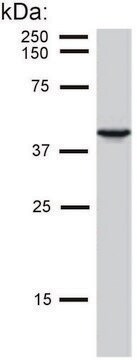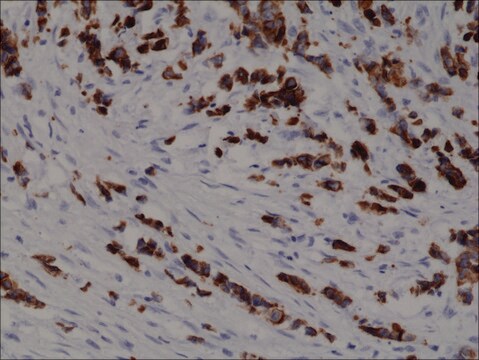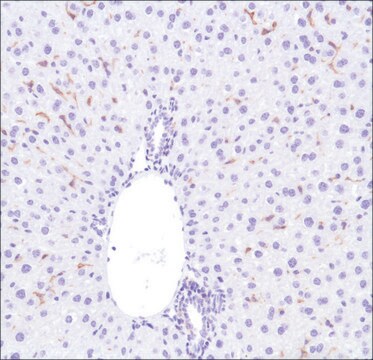MAB3238
Anti-Cytokeratin 19 Antibody, clone RCK108
clone RCK108, Chemicon®, from mouse
Synonym(e):
Anti-CK19, Anti-K19, Anti-K1CS
About This Item
Empfohlene Produkte
Biologische Quelle
mouse
Qualitätsniveau
Antikörperform
purified antibody
Antikörper-Produkttyp
primary antibodies
Klon
RCK108, monoclonal
Speziesreaktivität
human
Hersteller/Markenname
Chemicon®
Methode(n)
flow cytometry: suitable
immunocytochemistry: suitable
immunohistochemistry: suitable (paraffin)
western blot: suitable
Isotyp
IgG1κ
NCBI-Hinterlegungsnummer
UniProt-Hinterlegungsnummer
Versandbedingung
dry ice
Posttranslationale Modifikation Target
unmodified
Angaben zum Gen
human ... KRT19(3880)
Allgemeine Beschreibung
Cytokeratin 19 (molecular mass 40 kD) is a marker of simple epithelia. Cytokeratin 19 has been found in mesothelial and mesothelioma cells, and in ovarian cysts, cystadenomas, and ovarian carcinomas. It has been shown to be present in the basal layer of non-keratinizing stratified squamous epithelia such as the oral cavity and the ectocervix. Cytokeratin 19 has also been found in adenocarcinomas of the lung and in tumor cells of pulmonary metastases.
It has been reported that cytokeratin 19 can be found in the ductal cells of normal pancreas and in pancreas cancers. It was found that ductal cells of normal pancreas express a number of cytokeratins including cytokeratin 19, whereas acinar cells of normal pancreas also express numerous cytokeratins but not cytokeratin 19. Thus it is determined that pancreas cancers consistently express certain cytokeratins including cytokeratin 19, as do normal ductal cells, which indicates that pancreas cancers may originate from normal ductal cells.
Spezifität
Immunogen
Anwendung
Zellstruktur
Cytokeratine
Immunohistochemistry: 1:100-1:200 on frozen and paraffin embedded tissue (after treatment with pepsin or trypsin) sections.
Immunocytochemistry: 1:100-1:200
Flow cytometry: 1:100-1:200.
Optimal working dilutions must be determined by the end user.
Physikalische Form
Lagerung und Haltbarkeit
Sonstige Hinweise
Rechtliche Hinweise
Haftungsausschluss
Sie haben nicht das passende Produkt gefunden?
Probieren Sie unser Produkt-Auswahlhilfe. aus.
Empfehlung
Lagerklassenschlüssel
12 - Non Combustible Liquids
WGK
WGK 2
Flammpunkt (°F)
Not applicable
Flammpunkt (°C)
Not applicable
Analysenzertifikate (COA)
Suchen Sie nach Analysenzertifikate (COA), indem Sie die Lot-/Chargennummer des Produkts eingeben. Lot- und Chargennummern sind auf dem Produktetikett hinter den Wörtern ‘Lot’ oder ‘Batch’ (Lot oder Charge) zu finden.
Besitzen Sie dieses Produkt bereits?
In der Dokumentenbibliothek finden Sie die Dokumentation zu den Produkten, die Sie kürzlich erworben haben.
Artikel
This page shows the long-term culture and in-plate staining protocols using the CellASIC ONIX Microfluidic platform.
Unser Team von Wissenschaftlern verfügt über Erfahrung in allen Forschungsbereichen einschließlich Life Science, Materialwissenschaften, chemischer Synthese, Chromatographie, Analytik und vielen mehr..
Setzen Sie sich mit dem technischen Dienst in Verbindung.